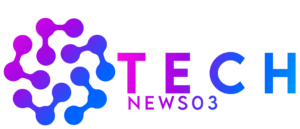Micron-sized “bow ties,” self-assembled from nanoparticles, type a wide range of totally different curling shapes that may be exactly managed, a analysis workforce led by the College of Michigan has proven.
The event opens the best way for simply producing supplies that work together with twisted mild, offering new instruments for machine imaginative and prescient and producing medicines.
Whereas biology is stuffed with twisted constructions like DNA, often known as chiral constructions, the diploma of twist is locked in — making an attempt to alter it breaks the construction. Now, researchers can engineer the diploma of twist.
Such supplies might allow robots to precisely navigate complicated human environments. Twisted constructions would encode info within the shapes of the sunshine waves that replicate from the floor, relatively than within the 2D association of symbols that includes most human-read indicators. This could make the most of a side of sunshine that people can barely sense, often known as polarization. The twisted nanostructures preferentially replicate sure sorts of circularly polarized mild, a form that twists because it strikes by means of house.
“It’s mainly like polarization imaginative and prescient in crustaceans,” stated Nicholas Kotov, the Irving Langmuir Distinguished College Professor of Chemical Sciences and Engineering, who led the research. “They decide up a variety of info regardless of murky environments.”
Robots might learn indicators that appear to be white dots to human eyes; the knowledge can be encoded within the mixture of frequencies mirrored, the tightness of the twist and whether or not the twist was left- or right-handed.
By avoiding using pure and ambient mild, relying as an alternative on circularly polarized mild generated by the robotic, robots are much less more likely to miss or misread a cue, whether or not in vibrant or darkish environments. Supplies that may selectively replicate twisted mild, often known as chiral metamaterials, are often arduous to make — however the bow ties aren’t.
“Beforehand, chiral metasurfaces have been made with nice problem utilizing multimillion greenback gear. Now, these complicated surfaces with a number of engaging makes use of may be printed like {a photograph},” Kotov stated.
Twisted nanostructures may assist create the proper circumstances to supply chiral medicines, that are difficult to fabricate with the right molecular twist.
“What hasn’t been seen in any chiral techniques earlier than is that we are able to management the twist from a totally twisted left-handed construction to a flat pancake to a totally twisted right-handed construction. We name this a chirality continuum,” stated Prashant Kumar, a U-M postdoctoral analysis fellow in chemical engineering and first creator of the research in Nature.
Kumar examined the bow ties as a kind of paint, mixing them with polyacrylic acid and dabbing them onto glass, cloth, plastic and different supplies. Experiments with lasers confirmed that this paint mirrored twisted mild solely when the twist within the mild matched the twist within the bow tie form.
The bow ties are made by mixing cadmium metallic and cystine, a protein fragment that is available in left- and right-handed variations, in water spiked with lye. If the cystine was all left-handed, left-handed bow ties shaped, and right-handed cystine yielded right-handed bow ties — every with a candy-wrapper twist.
However with totally different ratios of left-and right-handed cystine, the workforce made intermediate twists, together with the flat pancake at a 50-50 ratio. The pitch of the tightest bow ties, mainly the size of a 360-degree flip, is about 4 microns lengthy — inside infrared mild’s vary of wavelengths.
“Not solely do we all know the development from the atomic scale all the best way as much as the micron-scale of the bow ties, we even have idea and experiments that present us the guiding forces. With that basic understanding, you may design a bunch of different particles,” stated Thi Vo, a former U-M postdoctoral researcher in chemical engineering.
He labored with Sharon Glotzer, co-corresponding creator of the research and the Anthony C. Lembke Division Chair of Chemical Engineering at U-M.
In distinction with different chiral nanostructures, which might take days to self-assemble, the bow ties shaped in simply 90 seconds. The workforce produced 5,000 totally different shapes throughout the bow tie spectrum. They studied the shapes in atomic element utilizing X-rays at Argonne Nationwide Laboratory forward of the simulation evaluation.
Extra materials evaluation and contributions to idea had been offered by collaborators at U-M, the College of Pennsylvania, the College of Palermo in Italy and Professional Vitam Ltd, Romania. The research was supported by the Workplace of Naval Analysis, Nationwide Science Basis and Military Analysis Workplace.
Kotov can be the Joseph B. and Florence V. Cejka Professor of Engineering and a professor of chemical engineering and macromolecular science and engineering. Vo is now a professor of chemical and biomolecular engineering at Johns Hopkins College. Glotzer can be the John Werner Cahn Distinguished College Professor of Engineering, the Stuart W. Churchill Collegiate Professor of Chemical Engineering, and a professor of supplies science and engineering, macromolecular science and engineering, and physics.
